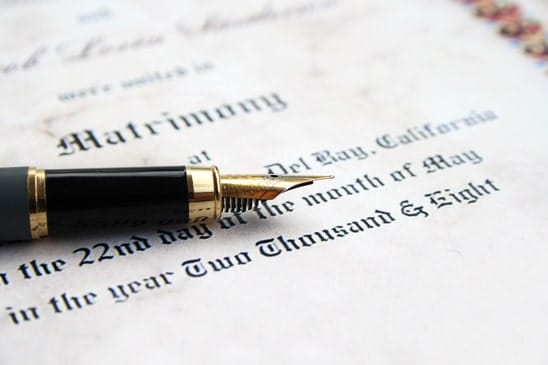Understanding the F-1 visa for studying in the United States
F-1 Visa (Student)
What is the F-1 Visa?
The F-1 visa allows a student to temporarily live in the United States for a defined period of time while studying at a school, college, seminary, or conservatory.
Is the F-1 visa right for me?
For many students, the chance to study in the United States is the culmination of years of hard work and dedication. Unless the person is already a U.S. citizen or green card holder, all prospective students will have to apply for a visa to study in the United States.
Because there are so many courses and places to study in the United States, the F-1 visa has a pretty broad application but also some very clear rules. The first is that you have to be coming to the United States with the intent to temporarily study. In other words, this is not an immigrant visa.
You must be studying at an academic institution, not training at a vocational school, as this will require an M-1 visa. Your academic institution must be approved by the Department of Homeland Security (DHS) through the Student Exchange and Visitor Program (SEVP), meaning it needs to be accredited to be able to accept foreign students on F-1 visas.
You will be able to work, but because this is a non-immigrant visa, you will be restricted to where you can work and the type of work. Finally, although your spouse and children can come with you, they will not be able to work but your children can enroll in schools. They will be on F-2 visas and tied to your visa’s status.
This guide will explain the F-1 visa in more detail:
F-1 Visa Eligibility
The requirements for an F-1 visa are:
- Apply and be accepted into a course of study at a SEVP-approved school in the United States. SEVP-approved schools are not just universities — they can also be high schools, seminaries, private elementary schools, conservatories, or a language program.
- You must be enrolled as a full-time student at the institution.
- You must be proficient in English or be enrolled in courses leading to English proficiency.
- Have proof of sufficient financial funds to support study in the United States.
- Have ties to your home country that show an intent to return after you finish studying in the United States, since the F-1 visa program is a temporary visa.
- Live outside the United States when you apply.
For many students, the process of applying and being accepted into a U.S. academic institution is the lengthiest part. The visa process is a series of steps that take place after you accept an enrollment offer.
The F-1 Visa Process
Congratulations, you have been accepted into a course of study by a U.S. academic institution! Years of hard work probably led you to this milestone, so here’s the process to obtain your student visa.
After your SEVP-approved school accepts your enrollment, you will be added to the Student and Exchange Visitor Information System (SEVIS). SEVP uses SEVIS to track and monitor schools; exchange visitor programs; and F, M, and J nonimmigrants while they visit the United States and participate in the U.S. education system.
Once you have registered with SEVIS, you will need to pay the I-901 fee. This fee is currently $350 for most people, and funds the SEVP program.
Your SEVP-approved school will then issue you a Form I-20. This form is incredibly important as it confirms your acceptance at the school, and therefore your eligibility for the F-1 visa. Once this Form I-20 has been issued, you will be able to apply to a U.S. embassy or consulate for your F-1 visa.
The steps required will vary between different U.S. embassies or consulates, so make sure you check their websites for further information.
However, you must complete the Form DS-160, which is similar to the Form DS-260 for immigrant visas. The form is very detailed and can take some time to fill in, so make sure you set aside plenty of time to complete it.
Once you have completed the Form DS-160, you will need to schedule an interview at a U.S. embassy or consulate, unless you are under 13 years of age or over 80 years of age. The U.S. Department of State says you should schedule an appointment for your visa interview at the U.S. embassy or consulate in the country where you live. You may schedule your interview at another U.S. embassy or consulate, but be aware that it may be more difficult to qualify for a visa outside of the country where you live.
Prior to your interview, you will need to pay the $160 application fee and also, depending on your nationality, pay an issuance fee, as well. The visa issuance fee is only due after your interview if your visa is approved. The next step will be an interview at the U.S. embassy or consulate.
Predictably, visa wait time can vary depending on the time of year and location. You can use the appointment wait time tool to see how long you will have to wait for an appointment at a specific U.S. embassy or consulate.
At this stage, it is important to note that F-1 visas for new students can only be issued up to 120 days in advance of the start date for a course of study. For existing F-1 visas, this is not the case and visas can be issued any time, as long as the student is currently enrolled at a SEVP-approved school or institution and in SEVIS.
IMPORTANT UPDATE (APRIL 2023): The U.S. Department of State announced that it will increase nonimmigrant visa fees effective May 30, 2023. The government stated there will be a 15% increase for travel, student, and exchange visas. Learn more about the upcoming fee changes here.
F-1 Visa Interview
You will generally be required to attend an interview at a U.S. embassy or consulate. You will need to bring:
- An unexpired passport valid for six months beyond the intended date of entry into the United States. Each individual who needs a visa must submit a separate application, including any family members listed in your passport.
- The Form DS-160 confirmation page.
- Application fee payment receipt.
- A photo that conforms to U.S. State Department requirements.
- Form I-20 that was issued to you by your academic institution.
You should also be prepared to bring evidence of:
- Transcripts, diplomas, degrees, or certificates from schools you attended.
- Standardized test scores required by your U.S. school.
- Proof of ties to your home country, as well as proof of funds to support you and pay for your studies while you are in the United States.
During your interview, the consular officer will ask you questions to determine whether or not to approve your F-1 visa. Make sure you are complete and accurate in your answers, as you will be under oath.
The consular officer will also take your fingerprints, although this will vary depending on your location. After your visa interview, the consular officer may determine that your application requires further administrative processing. The consular officer will let you know if this is required.
Once your interview is complete, you will be informed of the outcome and, if successful, be issued a visa to study in the United States.
Common Questions
Will I be able to bring my family with me on an F-1 visa?
Yes, you can bring your spouse and children with you. Your spouse and unmarried, minor children who intend to reside with you during your study may apply for F-2 visas. Although SEVIS fee payment is not required, your school must issue them an individual Form I-20. You must provide a copy of your F-1 or M-1 visa and provide proof of relationship.
Will I be able to work while on an F-1 visa?
F-1 students cannot work off-campus during the first academic year, but may accept on-campus employment subject to conditions and restrictions. After the first academic year, F-1 students can engage in three types of off-campus employment:
- Curricular Practical Training (CPT)
- Optional Practical Training (OPT) (pre-completion or post-completion)
- Science, Technology, Engineering, and Mathematics (STEM) OPT
Will I owe taxes if I work in the United States while on an F-1 visa?
This depends on your individual taxation situation, but typically you might be required to file a U.S. tax return. For more information, seek advice from a qualified tax professional.
What if I want to change schools during my F-1 visa period?
Generally, an F-1 student may transfer between SEVP-certified schools. However, this does involve paperwork and coordination. See here for more detailed instructions.
Can I stay in the United States after I finish my studies?
There are some programs and visas available for F-1 visa holders after you finish studying in the United States. These can be highly individual to your circumstances, field of study, and professional background, so do your research carefully.
_
If you’re looking to change your status from an F-1 visa to a marriage green card, Boundless can help! Learn more about the process here.


